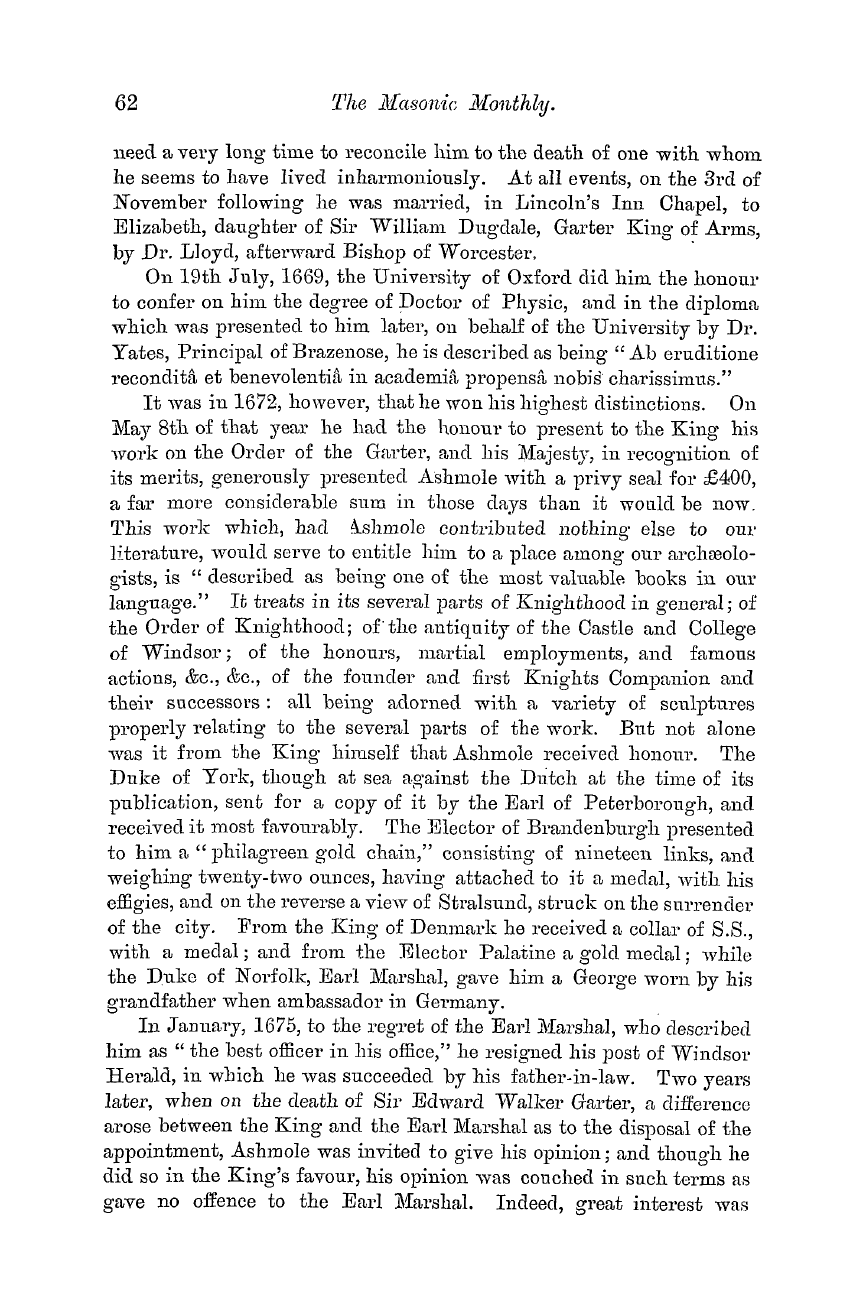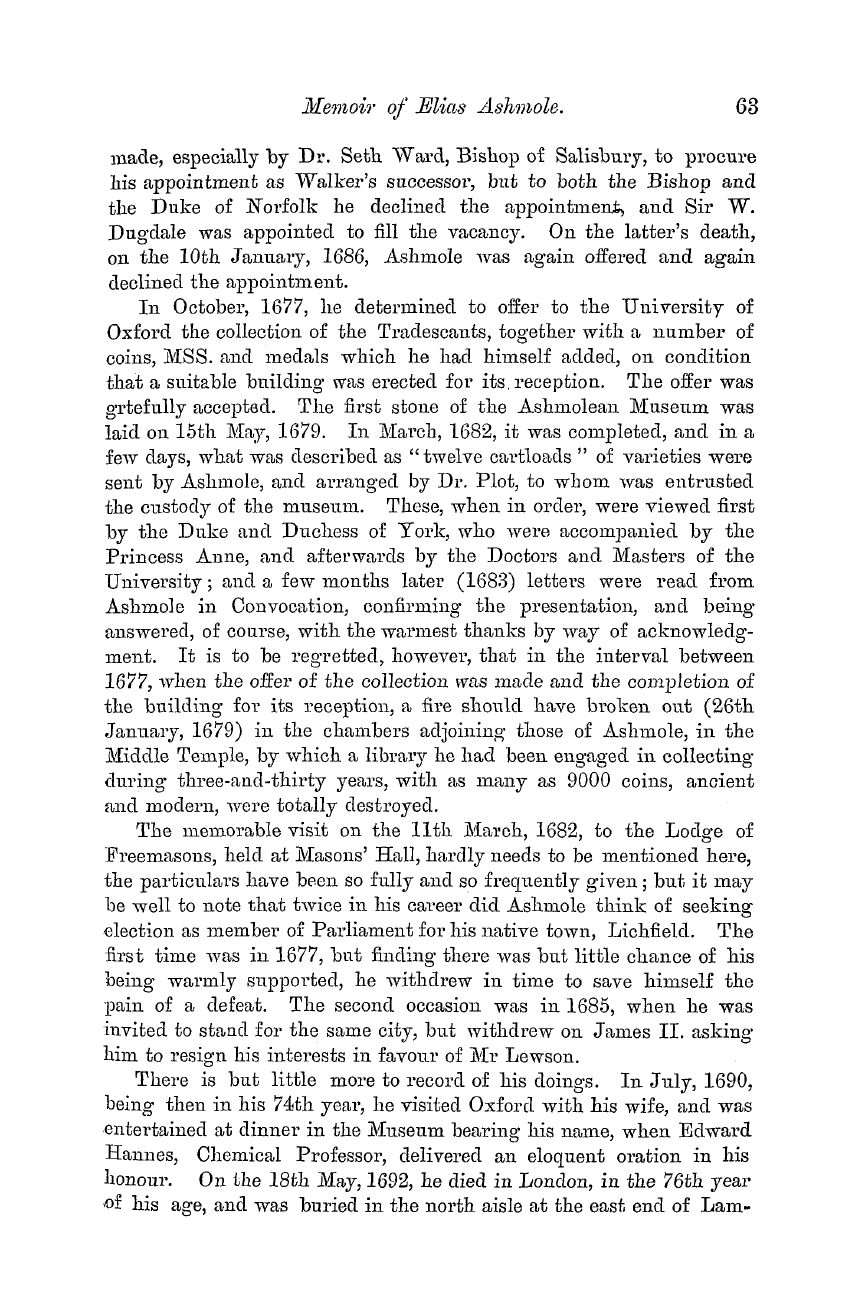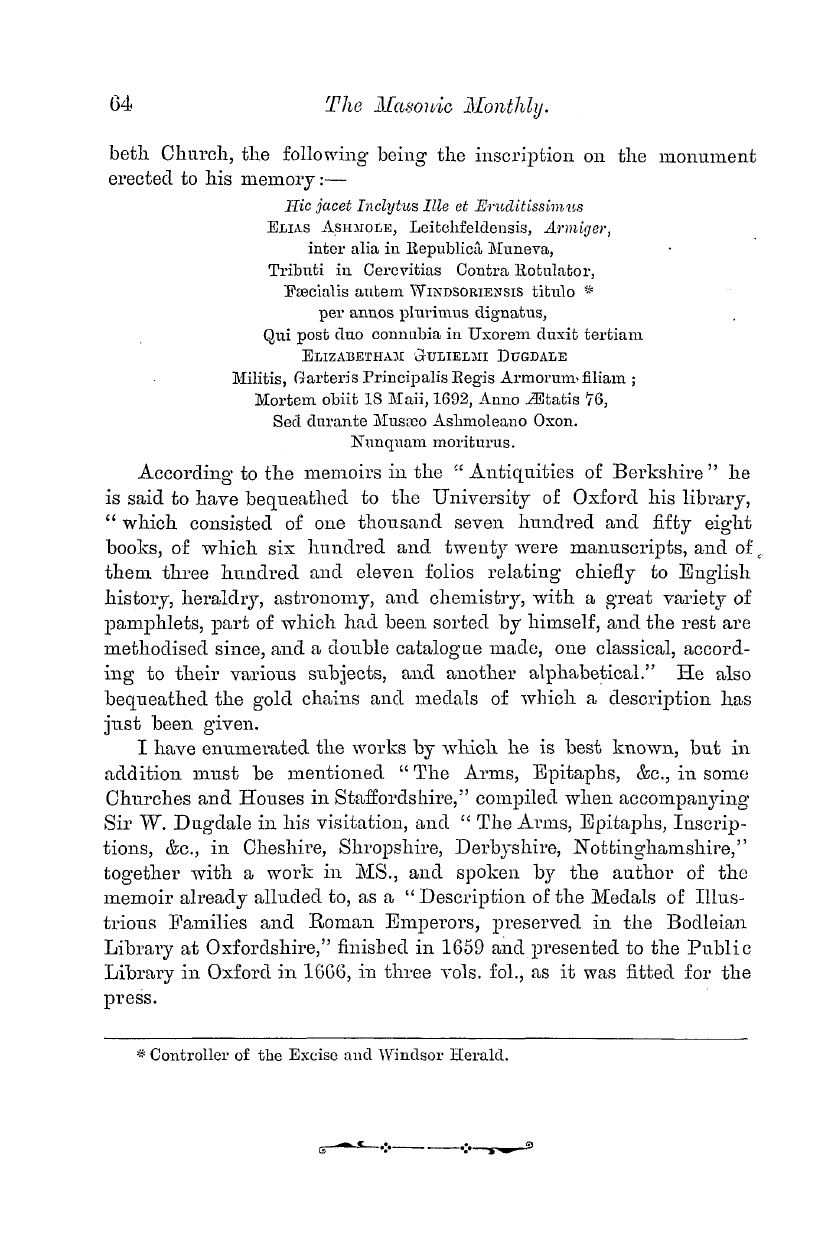-
Articles/Ads
Article EARLY HAUNTS OF FREEMASONRY. ← Page 3 of 4 →
Note: This text has been automatically extracted via Optical Character Recognition (OCR) software.
Early Haunts Of Freemasonry.
moderate radius , there always has been a fair cluster of lodges meeting within its limits . Thus , in the 1723 list , will be ^ found lodges meeting at the Fountain and Half Moon in the Strand , a third at the Castle in Drury-lane , a fourth at the Duke of Bedford ' s Head ,
Southampton-street , Covent Garden , a fifth at the Anchor , Dutchylane , Strand , and others at the Queen ' s Head , Great Queen-street , at the Nag ' s Head , Princess-street , Drury-lane , and the Crown and Anchor , near St . Clement ' s Church . In 1725 we find others meeting in York-street , Covent Garden , in Wych-street , and Cock Pit-court ,
Great Wild-street . In 1730-2 [ see appendix to Gould ' s " Four Old Lodges " ] figure No . 20 French Lodge , Swan , Long Acre , and No . 44 meeting at the same house , No . 56 Anchor and Crown , Short ' sgardens , and No . 85 King ' s Arms , Russell-street . We need not , howeA r er , be at the pains of Avading through later lists .
Enough has been done to show that , for reasons that are not very apparent , even if they Avere very material , this district , bounded on the north by Holborn and the east by Chancery-lane , to the south by
the Strand , and to the west by St . Martin ' s-lane , was one that was highly favoured by the members of our fraternity . It must not be forgotten , however , that this part of London was not quite as shady in appearance and reputation then as in some parts it certainly is now . A hundred and sixty years ago St . Martin ' s and St . Giles ' s were really
"in the Fields . " Then Parker ' s-lane , IIOAV Parker-street , and not a particularly savoury street either , Avas in truth a lane running through oj ) en fields , and , no doubt , had some pretentions to respectability . The neighbourhood of Covent Garden was a favourite resort of the bucks and bloods of the day , the very men who would be likely to take up
with a new fancy , especially if it gave them opportunities for enjoying themselves convivially . Thus , while Ave of the present clay value the neighbourhood only , or , at all events , principally , for its Masonic associations , it must be borne in mind that it was held in far higher estimation at the time when modern Freemasonry had its rise and for
many years after . It was not necessary to travel very far from Covent Garden to find oneself in a locality occupied by persons of repute and standing .
We have spoken of the proximity of original No . l ' s place of meeting to St . Paul ' s Cathedral as being appropriate , but it is as well to note likewise that the City of London proper was not , as it now is , occupied by warehouses and chambers , several storeys high , and almost palatial in their appearance , yet for the most part untenanted except
by watchmen and caretakers . The worthy citizens did not think it beneath their dignity to live on the premises where they transacted their business . Moreover , though the exodus westward of aristocrats
Note: This text has been automatically extracted via Optical Character Recognition (OCR) software.
Early Haunts Of Freemasonry.
moderate radius , there always has been a fair cluster of lodges meeting within its limits . Thus , in the 1723 list , will be ^ found lodges meeting at the Fountain and Half Moon in the Strand , a third at the Castle in Drury-lane , a fourth at the Duke of Bedford ' s Head ,
Southampton-street , Covent Garden , a fifth at the Anchor , Dutchylane , Strand , and others at the Queen ' s Head , Great Queen-street , at the Nag ' s Head , Princess-street , Drury-lane , and the Crown and Anchor , near St . Clement ' s Church . In 1725 we find others meeting in York-street , Covent Garden , in Wych-street , and Cock Pit-court ,
Great Wild-street . In 1730-2 [ see appendix to Gould ' s " Four Old Lodges " ] figure No . 20 French Lodge , Swan , Long Acre , and No . 44 meeting at the same house , No . 56 Anchor and Crown , Short ' sgardens , and No . 85 King ' s Arms , Russell-street . We need not , howeA r er , be at the pains of Avading through later lists .
Enough has been done to show that , for reasons that are not very apparent , even if they Avere very material , this district , bounded on the north by Holborn and the east by Chancery-lane , to the south by
the Strand , and to the west by St . Martin ' s-lane , was one that was highly favoured by the members of our fraternity . It must not be forgotten , however , that this part of London was not quite as shady in appearance and reputation then as in some parts it certainly is now . A hundred and sixty years ago St . Martin ' s and St . Giles ' s were really
"in the Fields . " Then Parker ' s-lane , IIOAV Parker-street , and not a particularly savoury street either , Avas in truth a lane running through oj ) en fields , and , no doubt , had some pretentions to respectability . The neighbourhood of Covent Garden was a favourite resort of the bucks and bloods of the day , the very men who would be likely to take up
with a new fancy , especially if it gave them opportunities for enjoying themselves convivially . Thus , while Ave of the present clay value the neighbourhood only , or , at all events , principally , for its Masonic associations , it must be borne in mind that it was held in far higher estimation at the time when modern Freemasonry had its rise and for
many years after . It was not necessary to travel very far from Covent Garden to find oneself in a locality occupied by persons of repute and standing .
We have spoken of the proximity of original No . l ' s place of meeting to St . Paul ' s Cathedral as being appropriate , but it is as well to note likewise that the City of London proper was not , as it now is , occupied by warehouses and chambers , several storeys high , and almost palatial in their appearance , yet for the most part untenanted except
by watchmen and caretakers . The worthy citizens did not think it beneath their dignity to live on the premises where they transacted their business . Moreover , though the exodus westward of aristocrats

































































